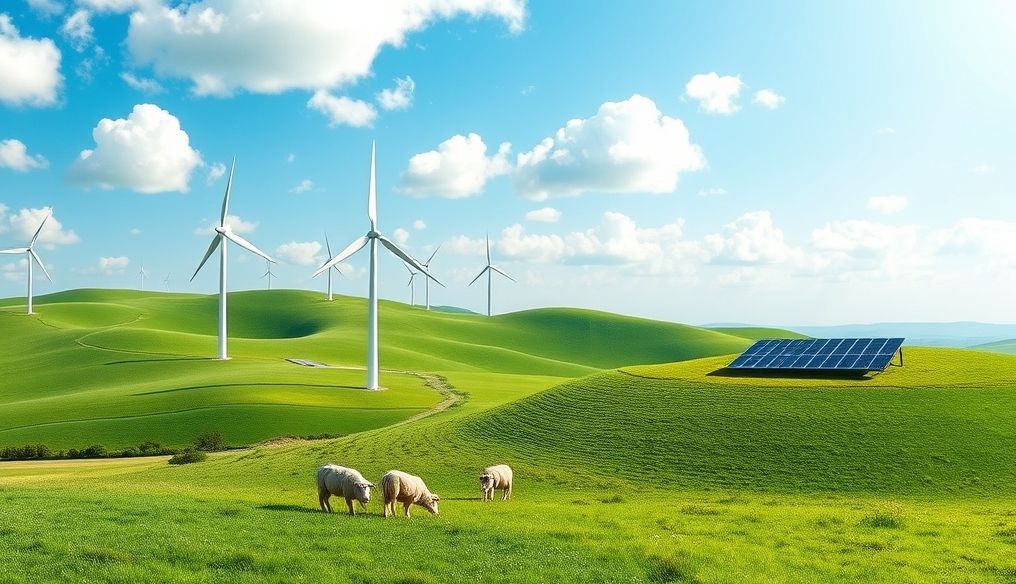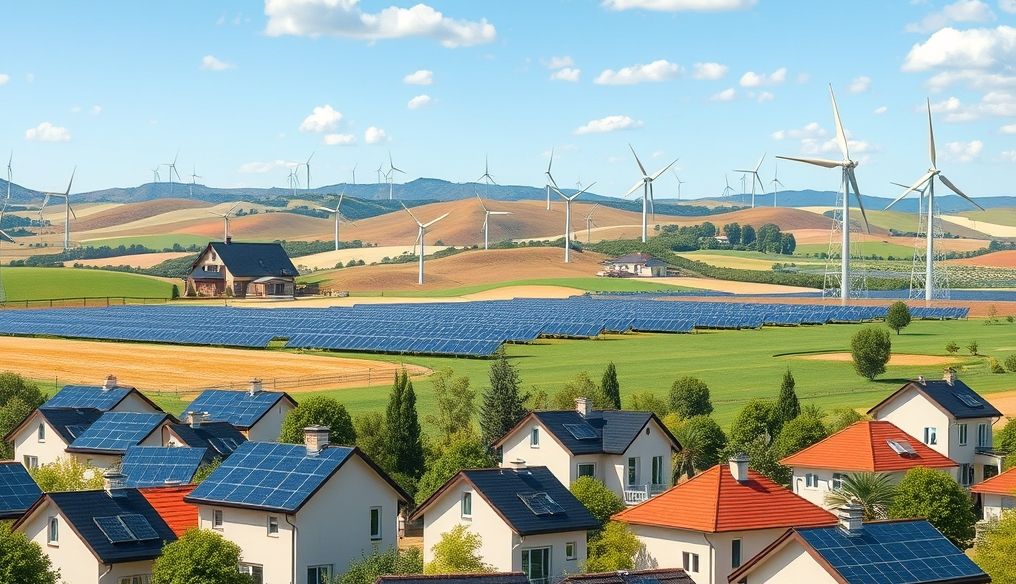What is Renewable Energy (Solar, Wind) and How Does it Work?
In the face of growing environmental challenges, renewable energy has emerged as a promising solution to meet our energy needs while preserving our planet. Among the most common renewable energy sources are solar and wind power. Let's delve into understanding these technologies and how they work.
1. Introduction to Renewable Energy
Renewable energy is energy that comes from natural sources that are replenished constantly and do not deplete. These sources include the sun, wind, water, geothermal heat, and biomass. Unlike fossil fuels, which are finite and contribute to environmental pollution, renewable energy is clean and sustainable.
2. Solar Energy: Harnessing the Power of the Sun
2.1. How Does Solar Energy Work?
Solar energy relies on converting sunlight into electricity or heat. There are two main ways to achieve this:
- Photovoltaic (PV) Cells: These cells convert sunlight directly into electricity through the photovoltaic effect. PV cells are typically made of semiconductor materials such as silicon. When sunlight strikes the cell, electrons are released, creating an electric current.
- Concentrated Solar Power (CSP): This technology uses mirrors to focus sunlight onto a thermal receiver, which heats a fluid (such as water or oil). This heated fluid is then used to produce steam, which drives turbines to generate electricity.
2.2. Types of Solar Systems
There are various types of solar systems, including:
- Grid-Tied Solar Systems: These systems are connected to the public electricity grid, allowing excess electricity to be exported to the grid and electricity to be imported when needed.
- Off-Grid Solar Systems: These systems are independent of the electricity grid and are commonly used in remote areas. These systems require energy storage in batteries to provide electricity when the sun is not shining.
- Hybrid Solar Systems: These systems combine solar power with other energy sources, such as diesel generators or wind power, to ensure a reliable supply of electricity.
2.3. Benefits of Solar Energy
Solar energy has numerous benefits, including:
- Clean and Renewable Energy Source: Solar energy produces no harmful emissions and helps reduce reliance on fossil fuels.
- Reduced Electricity Bills: Homeowners and businesses can save money on their electricity bills by generating their own electricity from solar power.
- Energy Independence: Solar energy can reduce dependence on foreign energy sources and promote energy security.
- Job Creation: The solar energy sector provides jobs in manufacturing, installation, and maintenance.
3. Wind Energy: Exploiting the Power of Wind
3.1. How Does Wind Energy Work?
Wind energy relies on using wind turbines to convert the kinetic energy of the wind into electricity. When the wind blows on the turbine blades, they rotate, which drives a generator that produces electricity.
3.2. Types of Wind Turbines
There are two main types of wind turbines:
- Horizontal Axis Wind Turbines (HAWT): These are the most common types of wind turbines, featuring blades that rotate around a horizontal axis.
- Vertical Axis Wind Turbines (VAWT): These turbines have blades that rotate around a vertical axis. VAWTs are less efficient than HAWTs but can operate in more diverse wind conditions.
3.3. Wind Farms
Wind farms are large groups of wind turbines located in strategic locations where the wind is strong and consistent. Wind farms can generate significant amounts of electricity, making them an important contributor to the renewable energy mix.
3.4. Benefits of Wind Energy
Wind energy has numerous benefits, including:
- Clean and Renewable Energy Source: Wind energy produces no harmful emissions and helps reduce reliance on fossil fuels.
- Low Operating Costs: Once wind turbines are installed, operating costs are relatively low.
- Scalability: Wind farms can be easily expanded to meet growing energy demand.
- Job Creation: The wind energy sector provides jobs in manufacturing, installation, and maintenance.
4. Comparing Solar and Wind Energy
Both solar and wind energy have their strengths and weaknesses. Solar energy is more suitable for sunny areas, while wind energy is more suitable for windy areas. Solar energy can be more expensive to install than wind energy, but it requires less maintenance. The best option depends on local conditions and individual needs.
| Feature | Solar Energy | Wind Energy |
|---|---|---|
| Source | Sunlight | Wind |
| Geographic Suitability | Sunny Areas | Windy Areas |
| Installation Cost | Relatively Higher | Relatively Lower |
| Operating Cost | Very Low | Low |
| Maintenance | Less | More |
| Environmental Impact | Low | Low (Potential impact on birds and bats) |
5. Challenges of Renewable Energy
Despite the many benefits of renewable energy, there are some challenges that need to be addressed:
- Intermittency: Solar and wind energy depend on weather conditions, meaning that electricity production can be intermittent and unreliable.
- Storage: Storing renewable energy requires the use of batteries or other technologies to provide electricity when the sun is not shining or the wind is not blowing.
- Cost: Although the cost of renewable energy has decreased significantly in recent years, it is still more expensive than fossil fuels in some cases.
- Infrastructure: Integrating renewable energy into the electricity grid requires significant investments in infrastructure, such as smart transmission lines.
6. The Future of Renewable Energy
The future of renewable energy looks promising. As technology continues to evolve and costs continue to decrease, renewable energy is expected to play an increasingly important role in meeting our energy needs. Supportive government policies and increasing public awareness can help accelerate the transition to a sustainable energy system.
7. The Role of Renewable Energy in Combating Climate Change
Renewable energy is a vital tool in combating climate change. By replacing fossil fuels with renewable energy sources, we can reduce greenhouse gas emissions and slow the pace of global warming.
8. Tips for Consumers Interested in Renewable Energy
If you are interested in using renewable energy in your home or business, here are some tips:
- Conduct an Energy Audit: Identify ways to reduce your energy consumption before investing in renewable energy.
- Look for Government Incentives: Many governments offer tax incentives, grants, and rebates for installing renewable energy systems.
- Get Multiple Quotes: Compare quotes from different companies to ensure you are getting the best deal.
- Choose a System That Fits Your Needs: Consider your energy consumption, location, and budget when choosing a renewable energy system.
- Maintain Your System Properly: Regularly maintain your renewable energy system to ensure optimal performance.
Conclusion: Renewable energy, particularly solar and wind power, represents a sustainable and promising solution to meet our energy needs while preserving the environment. Despite some challenges, ongoing technological advancements and increasing awareness of the importance of sustainability point to a bright future for renewable energy.




